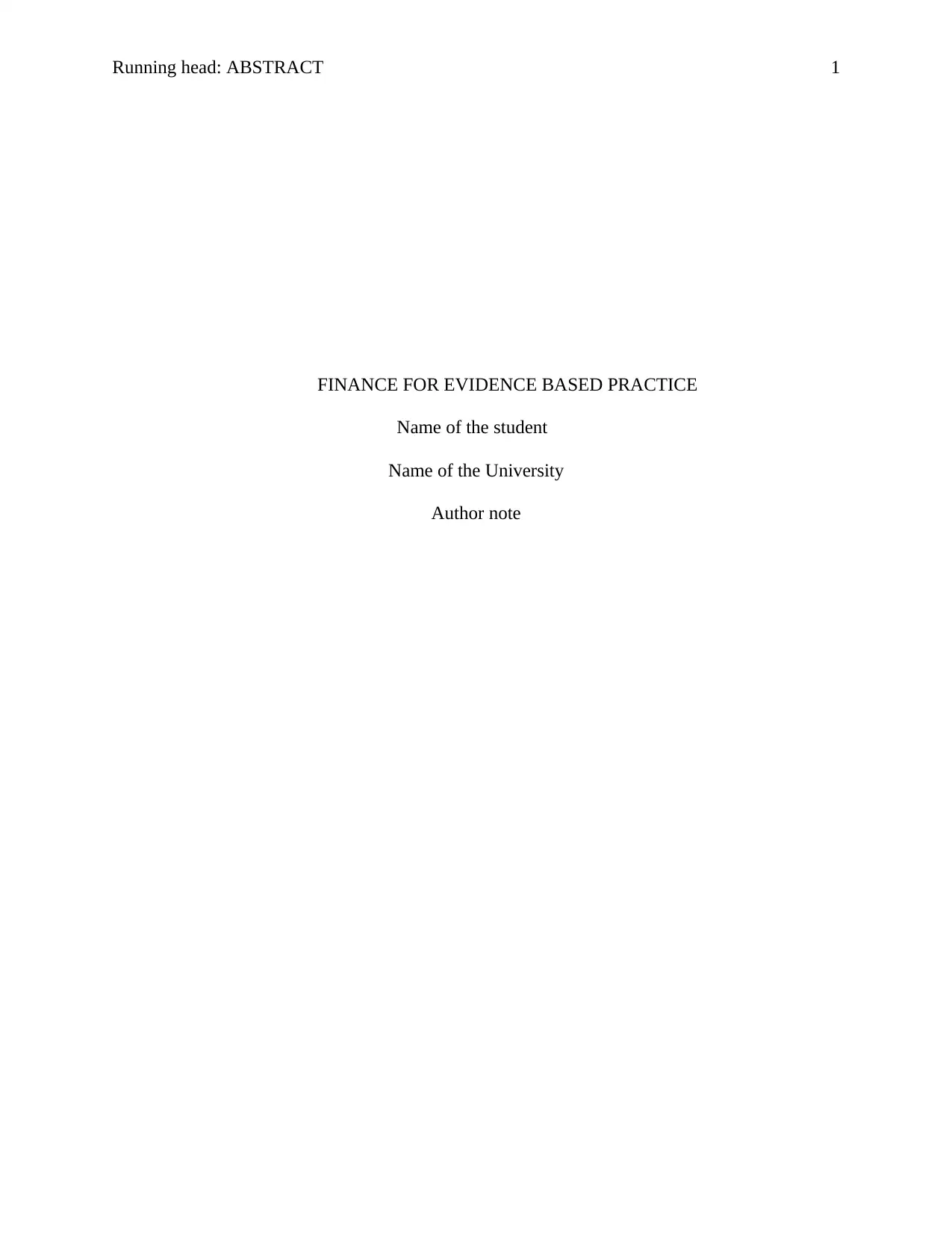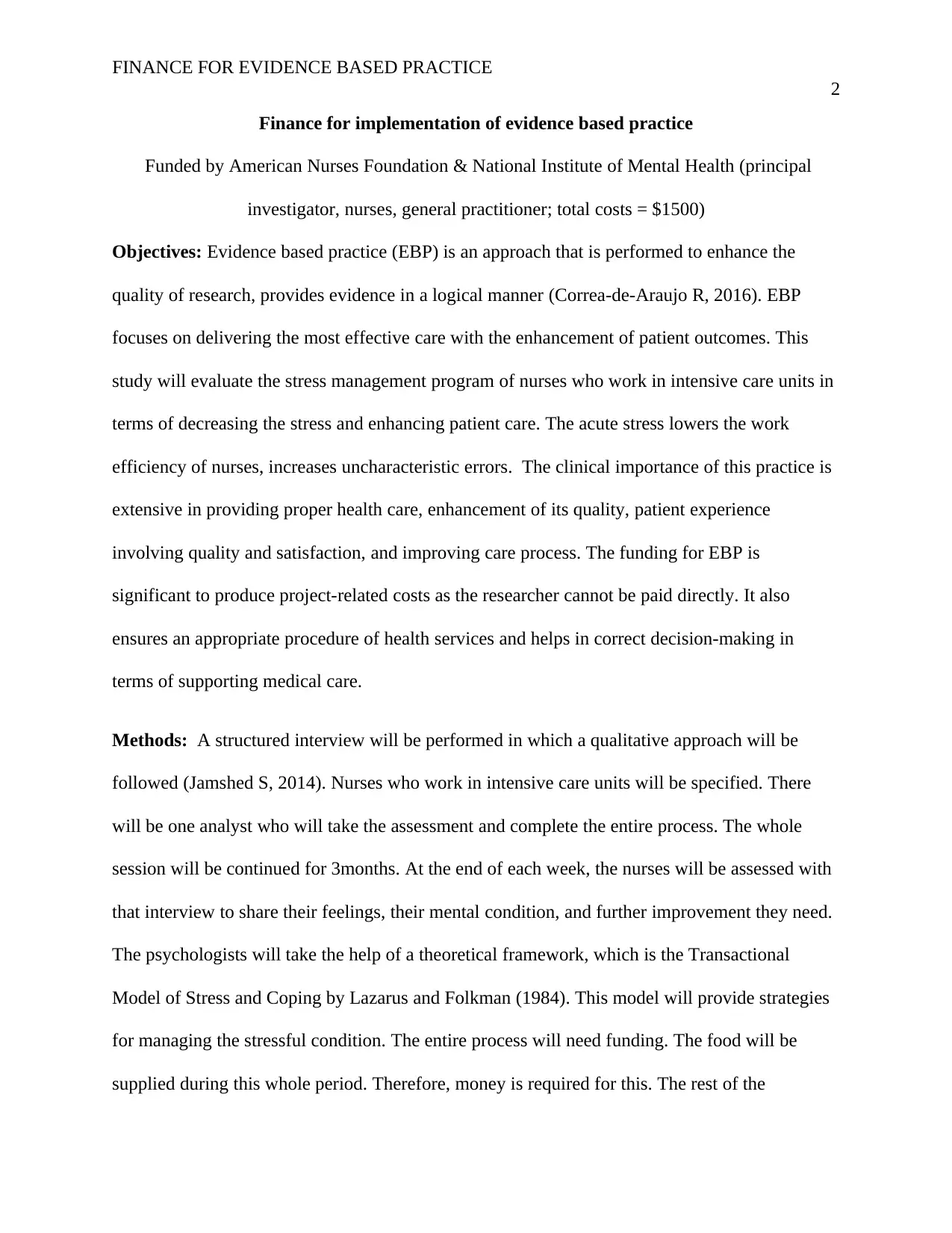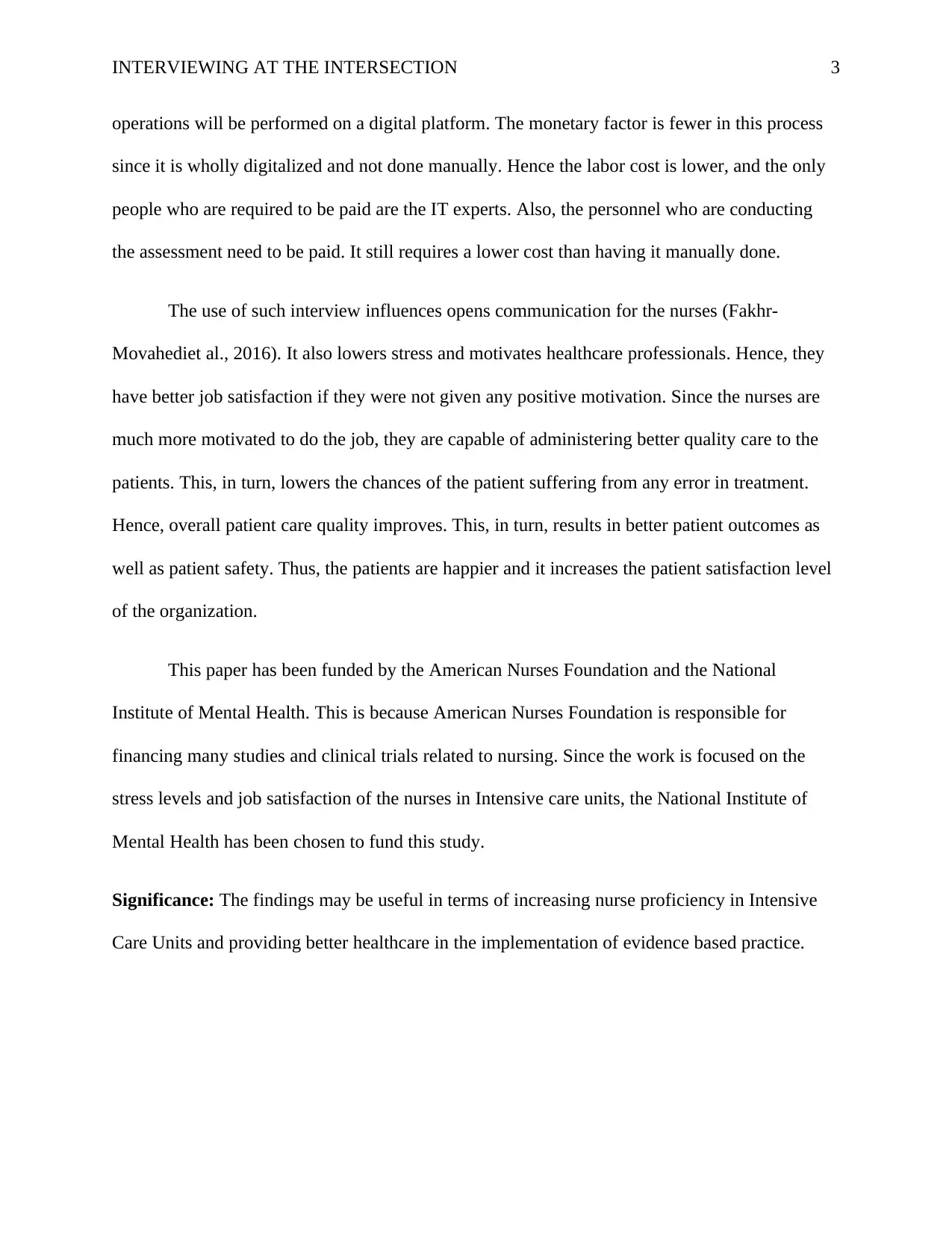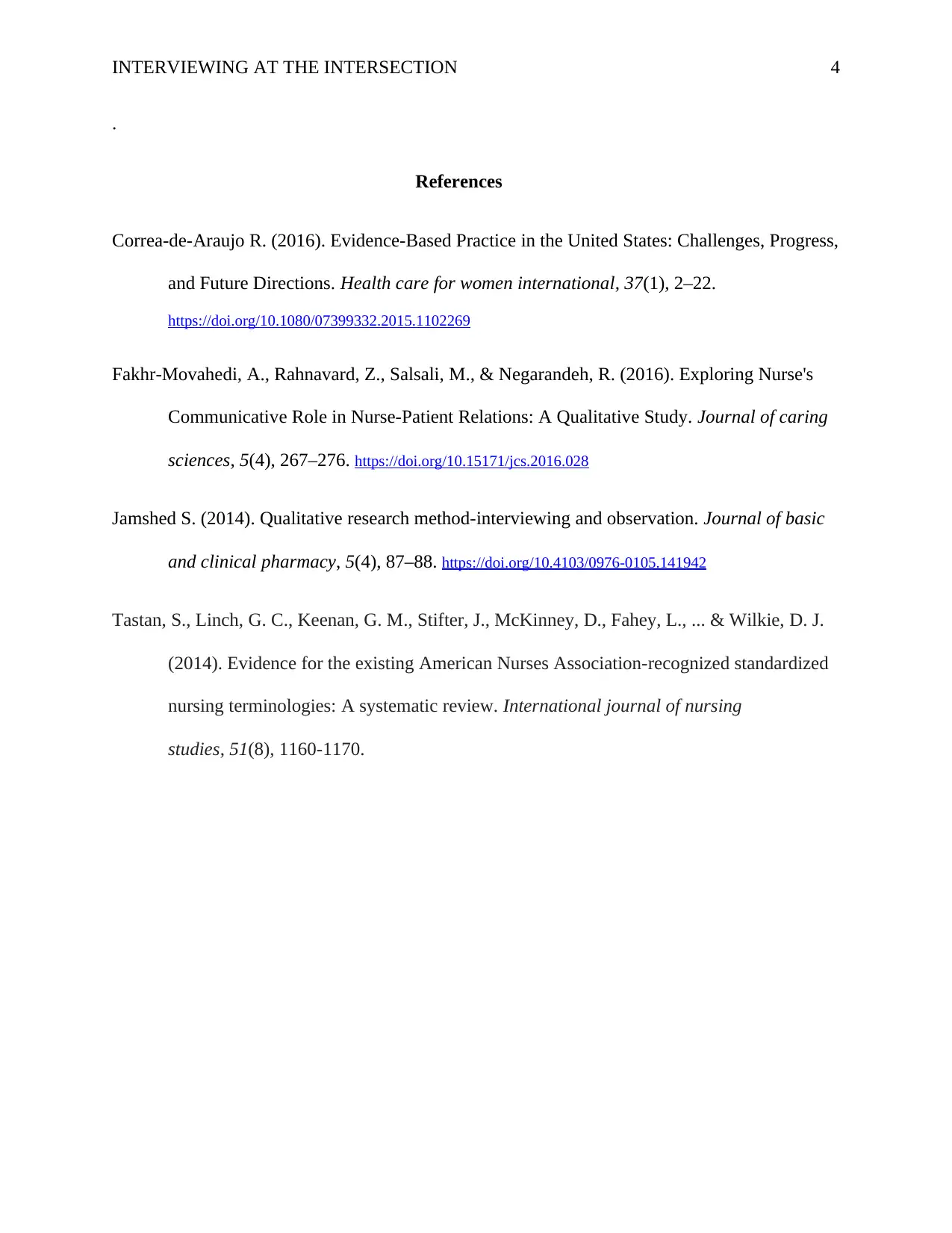Finance for Evidence Based Practice: Nursing Study Report & Analysis
VerifiedAdded on 2022/08/21
|4
|864
|14
Report
AI Summary
This report focuses on the financial aspects of implementing evidence-based practice (EBP) in nursing, specifically within intensive care units (ICUs). The study, funded by the American Nurses Foundation and the National Institute of Mental Health, aims to evaluate a stress management program for ICU nurses to reduce burnout and enhance patient care. The report outlines the objectives, which include improving patient outcomes and healthcare quality through EBP. The methodology involves structured interviews with ICU nurses, using the Transactional Model of Stress and Coping by Lazarus and Folkman. The financial considerations involve funding for the program's operational costs, including personnel and digital platform expenses. The significance of the study lies in improving nurse proficiency, patient care, and patient outcomes. The report also includes references to relevant literature on EBP and nurse communication.
1 out of 4











![[object Object]](/_next/static/media/star-bottom.7253800d.svg)